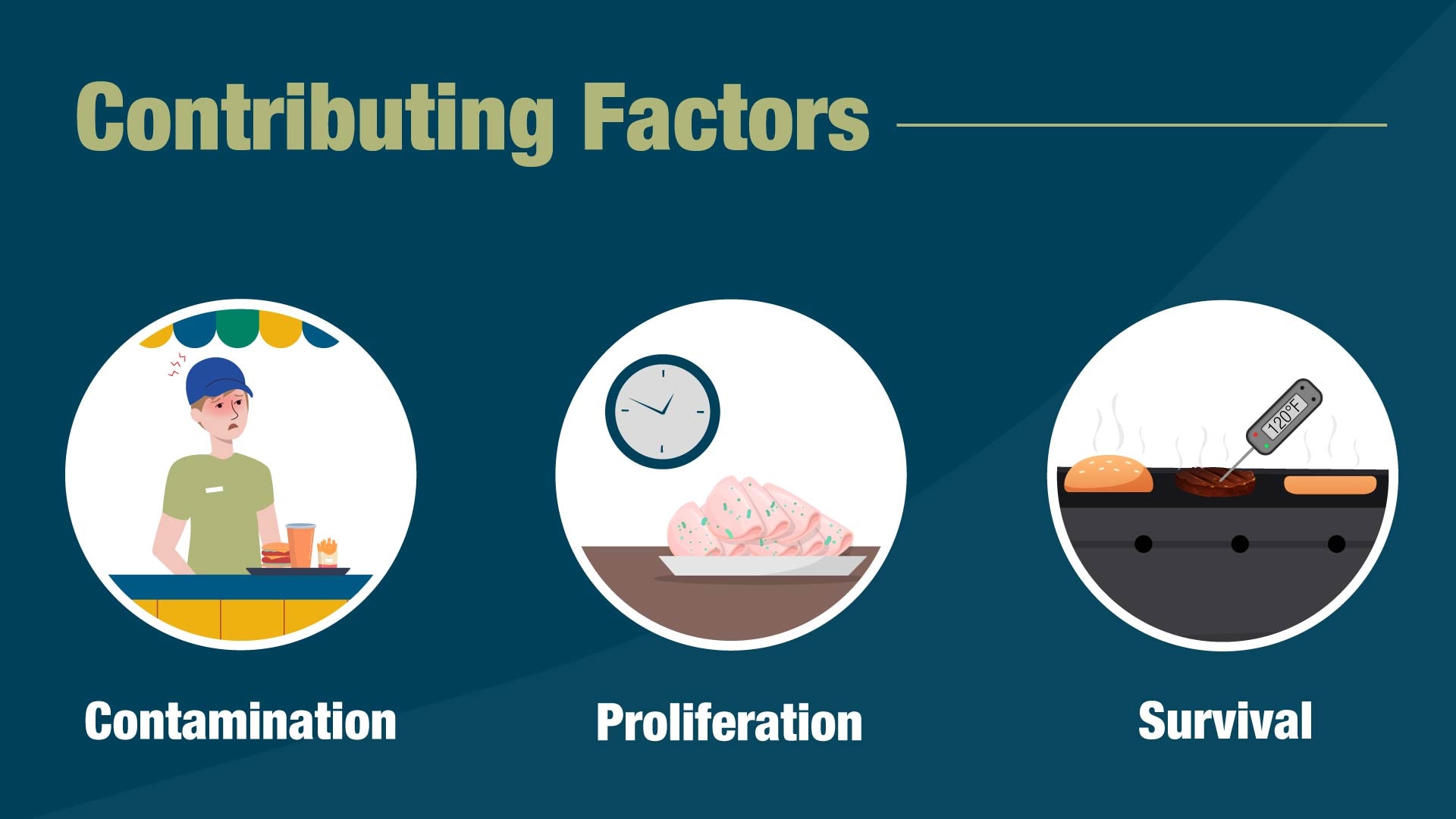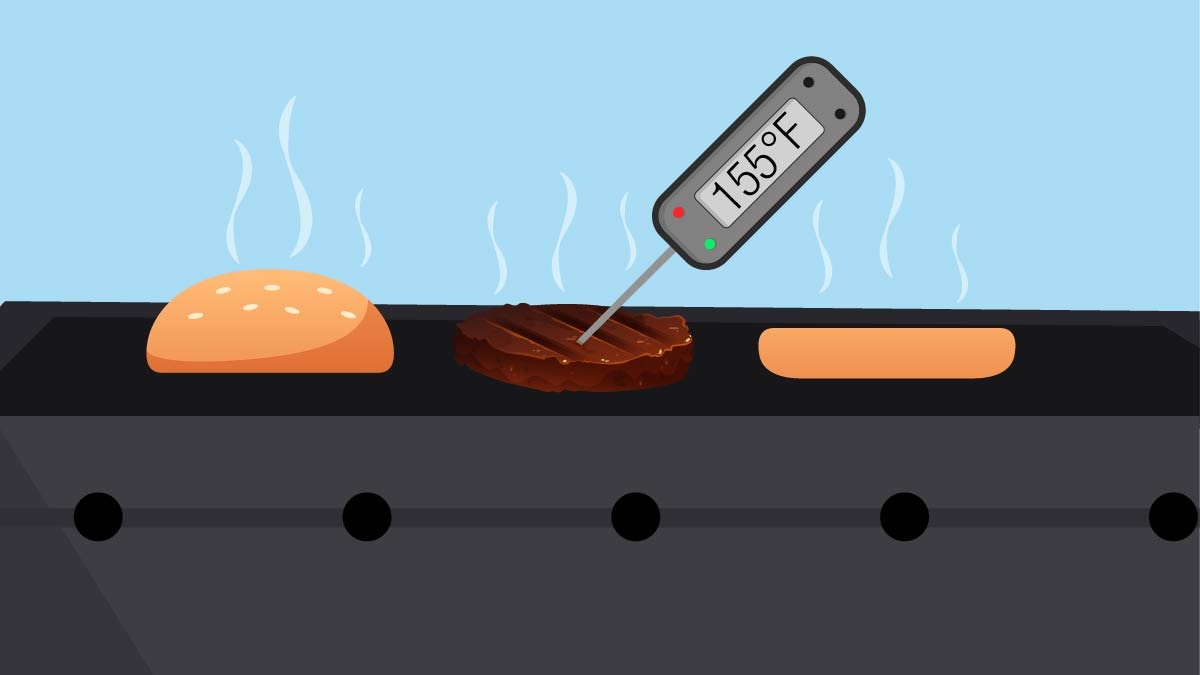At a glance
Review technical definitions for the 30 contributing factors for foodborne illness outbreaks, organized around the three types of contributing factors (contamination, proliferation, and survival). Staff from CDC, the Food and Drug Administration (FDA), and state health departments helped revise these contributing factors to show how foodborne illness outbreaks evolve.

Old definitions
Note
Contamination
Contamination contributing factors are factors that introduce or otherwise permit contamination of food. These factors relate to how the etiologic agent got onto or into the food.
Contamination Contributing Factors
Proliferation
For bacterial and fungal outbreaks only.
Proliferation contributing factors are factors that allow proliferation of etiologic agents. These factors relate to how the pathogen was able to increase in numbers and/or produce toxic products before the food was ingested.
Proliferation Contributing Factors
Survival
For bacterial, viral, parasitic, or fungal outbreaks only.
Survival factors are factors that allow pathogens to survive or that fail to inactivate the contaminant. These factors relate to processes that should have killed or reduced the pathogen population to below an infectious dose but did not because of one of these factors.



